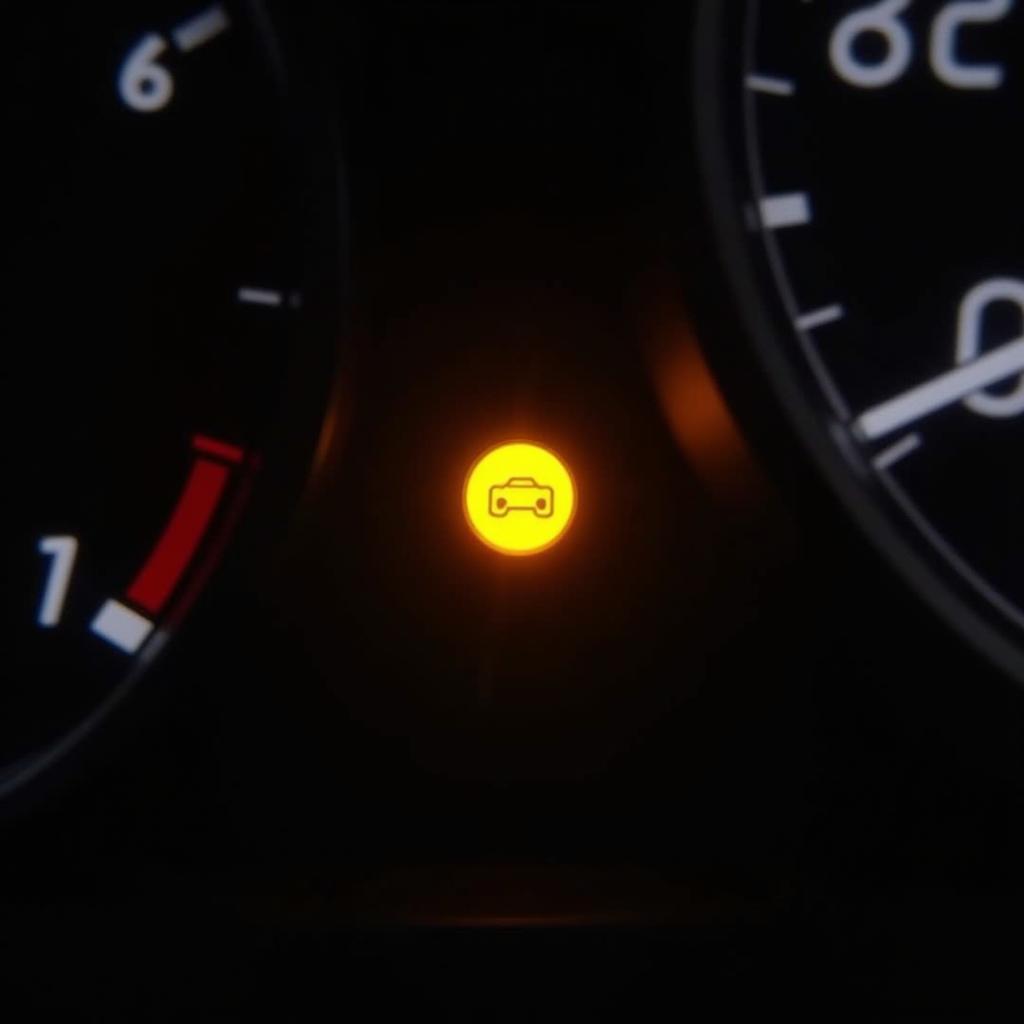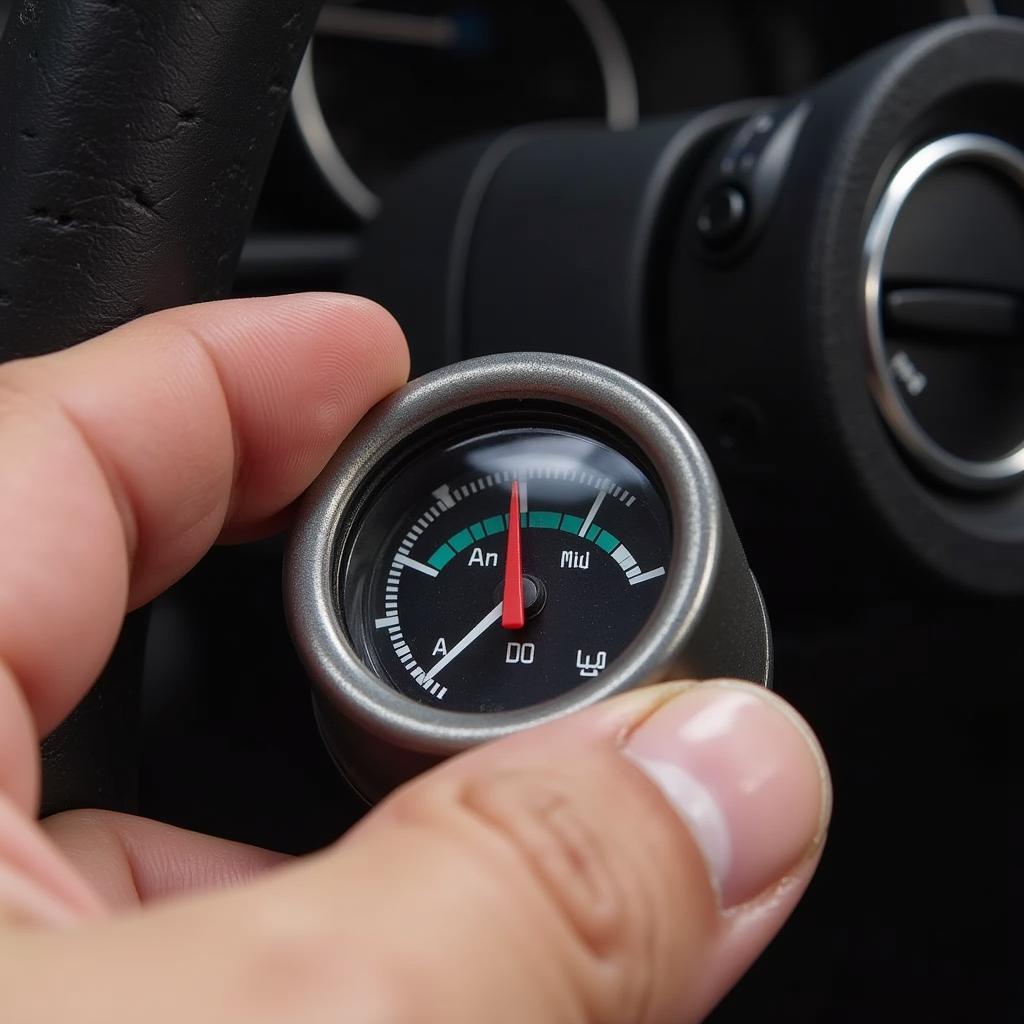Seeing a yellow brake fluid warning light illuminate on the dashboard of your 1983 Mercedes 300D can be a nerve-wracking experience. While it might seem like a daunting issue, understanding the common causes and potential solutions can help you address the problem swiftly and safely.
This comprehensive guide will delve into the reasons behind a lit brake fluid warning light on your classic Mercedes, empowering you with the knowledge to diagnose and potentially resolve the issue. We’ll explore everything from basic checks to more complex scenarios, offering practical advice for both DIY enthusiasts and those who prefer professional assistance.
Understanding Your Mercedes 300D’s Brake System
Before we dive into the specifics of the warning light, it’s essential to grasp the basics of your car’s braking system. The 1983 Mercedes 300D utilizes a hydraulic system, meaning it relies on brake fluid to transmit force from the brake pedal to the wheels, ultimately stopping the vehicle.
When you depress the brake pedal, the force is amplified by the brake booster and transferred to the master cylinder. This cylinder then pressurizes the brake fluid, pushing it through brake lines to the calipers at each wheel. The pressure forces the calipers to clamp down on the brake rotors or drums, creating friction and slowing the car down.
Why is My Brake Fluid Warning Light On?
The yellow brake fluid warning light is your car’s way of signaling a potential problem within the braking system. It’s crucial to never ignore this warning, as driving with compromised brakes can have serious consequences.
Here are some of the most common reasons why the brake fluid warning light might be illuminated on your 1983 Mercedes 300D:
-
Low Brake Fluid Level: This is the most common culprit. Over time, brake pads wear down, requiring the calipers to push out further to engage the rotors. This process consumes brake fluid, gradually lowering the fluid level in the reservoir.
-
Brake Fluid Leak: A leak anywhere in the system, be it the master cylinder, brake lines, or wheel cylinders, will cause the brake fluid level to drop, triggering the warning light.
-
Worn-out Brake Pads: As mentioned earlier, worn brake pads contribute to a lower brake fluid level. When the pads wear thin, the caliper pistons extend further, utilizing more brake fluid.
-
Faulty Brake Fluid Level Sensor: While less common, a malfunctioning sensor in the brake fluid reservoir can incorrectly signal a low fluid level, illuminating the warning light even if the fluid level is adequate.
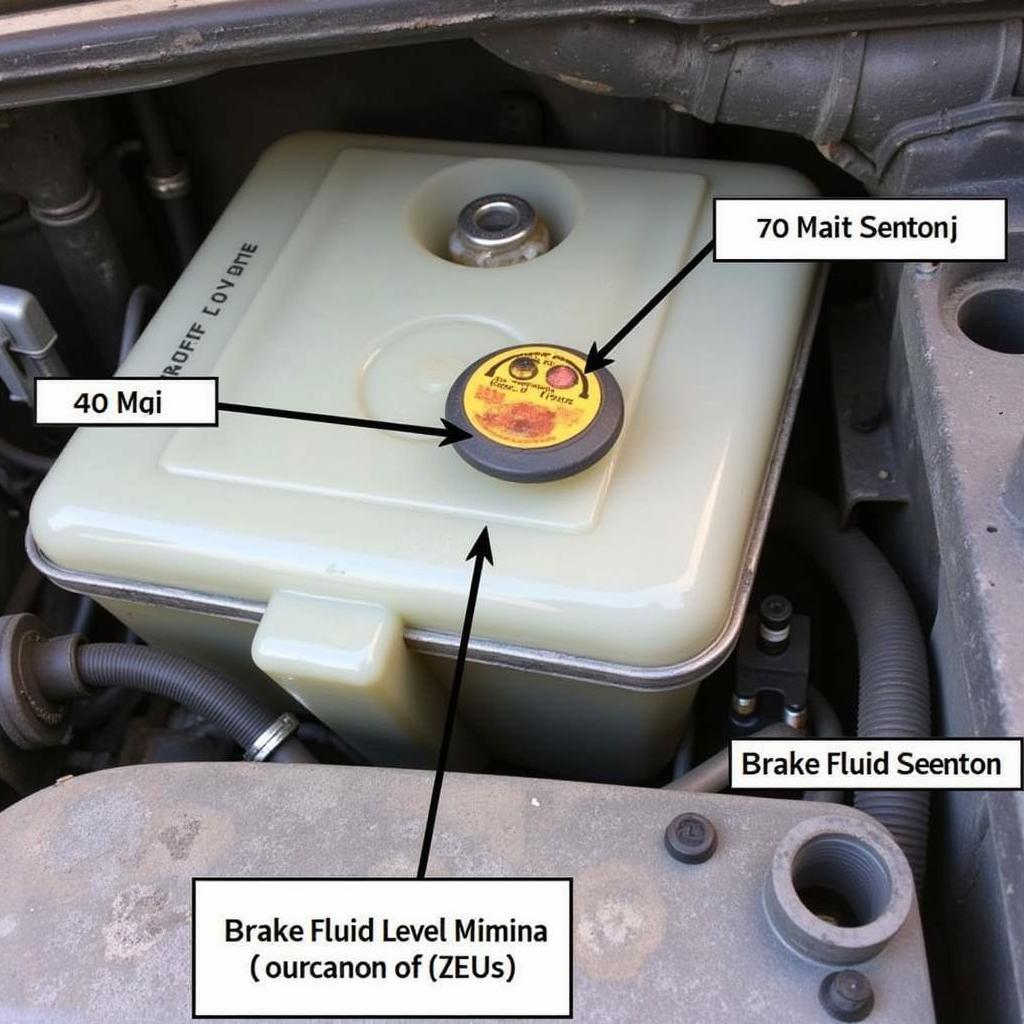 Mercedes 300D Brake Fluid Reservoir
Mercedes 300D Brake Fluid Reservoir
Diagnosing the Issue: What to Check First
If you notice the yellow brake fluid warning light on your dashboard, the first step is to safely park your car and inspect the brake fluid level.
-
Locate the brake fluid reservoir: Open the hood and locate the reservoir, typically situated on the driver’s side of the engine bay. It’s a translucent plastic container with a black cap.
-
Check the fluid level: The reservoir will have “Min” and “Max” markings on the side. Ensure the brake fluid level is between these two marks.
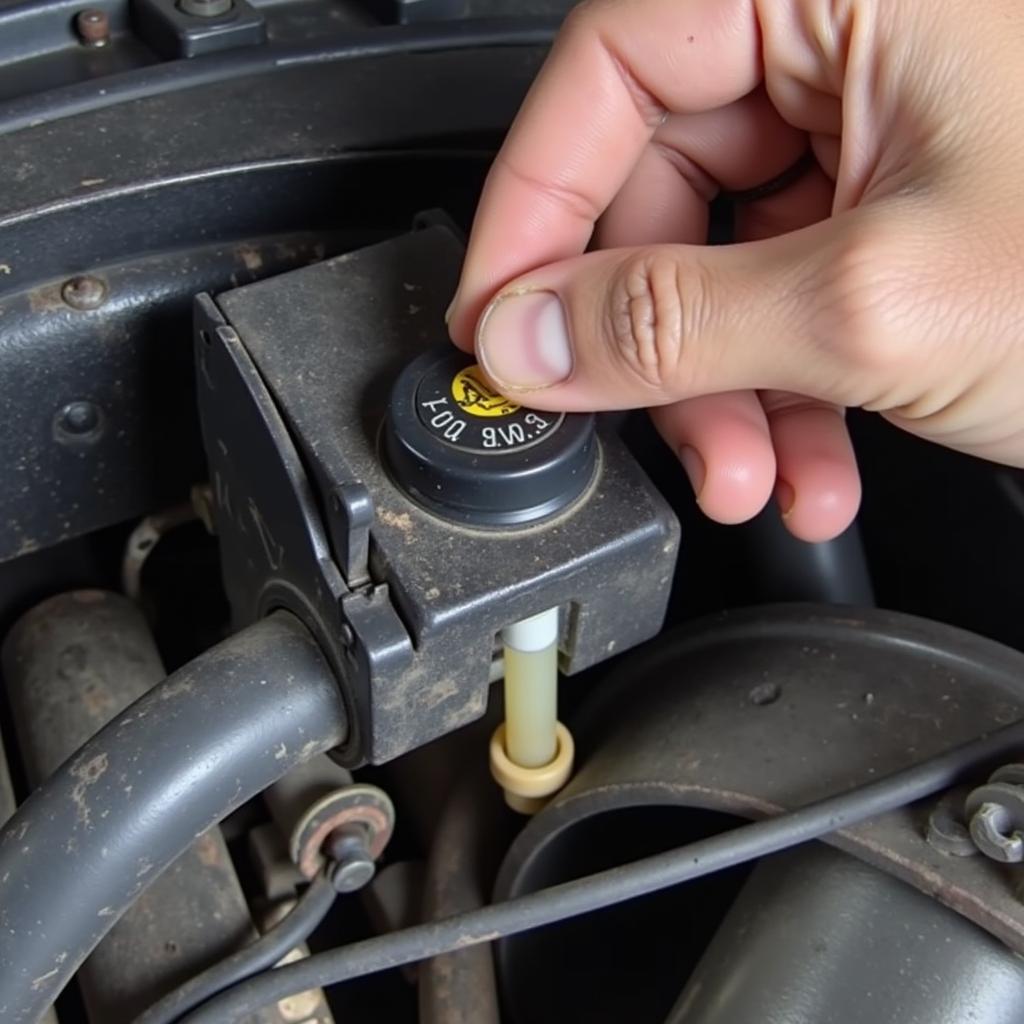 Checking Brake Fluid Level in a Mercedes 300D
Checking Brake Fluid Level in a Mercedes 300D
What if the Brake Fluid Level is Low?
If you find the brake fluid level below the “Min” mark, it’s crucial to address this promptly. However, simply adding more fluid without identifying the root cause won’t solve the underlying issue.
-
Adding Brake Fluid: If you suspect the low level is due to worn brake pads, you can temporarily top off the brake fluid to restore a safe level. Use only DOT 3 or DOT 4 brake fluid, as specified in your owner’s manual.
-
Inspecting for Leaks: Before adding any fluid, thoroughly inspect all visible brake components, including the master cylinder, brake lines, and connections, for any signs of leaks. Look for wet spots, drips, or dampness.
Caution: Brake fluid is corrosive and can damage your car’s paint. If you detect a leak, it’s strongly advised to seek professional help.
When to Seek Professional Help
While adding brake fluid might offer a temporary fix, it’s crucial to emphasize that any issues with your braking system warrant professional attention.
Here are some scenarios where seeking a qualified mechanic is non-negotiable:
- You detect a brake fluid leak.
- The brake fluid level remains consistently low despite topping it off.
- The brake pedal feels spongy or goes all the way to the floor.
- You hear unusual noises when applying the brakes.
- You experience vibrations or pulsations in the brake pedal.
Maintaining Your Mercedes 300D’s Braking System
Regular maintenance plays a vital role in preventing brake issues and ensuring your safety on the road. Here are some essential maintenance tips for your 1983 Mercedes 300D:
-
Regular Brake Fluid Flushes: Aim to flush your brake fluid every 2 years or 24,000 miles, whichever comes first. This process removes moisture and contaminants that can degrade the fluid over time.
-
Timely Brake Pad Replacement: Replace your brake pads before they wear down completely. Consult your owner’s manual for the recommended service intervals.
-
Visual Inspections: Regularly inspect your brake components for signs of wear, leaks, or damage.
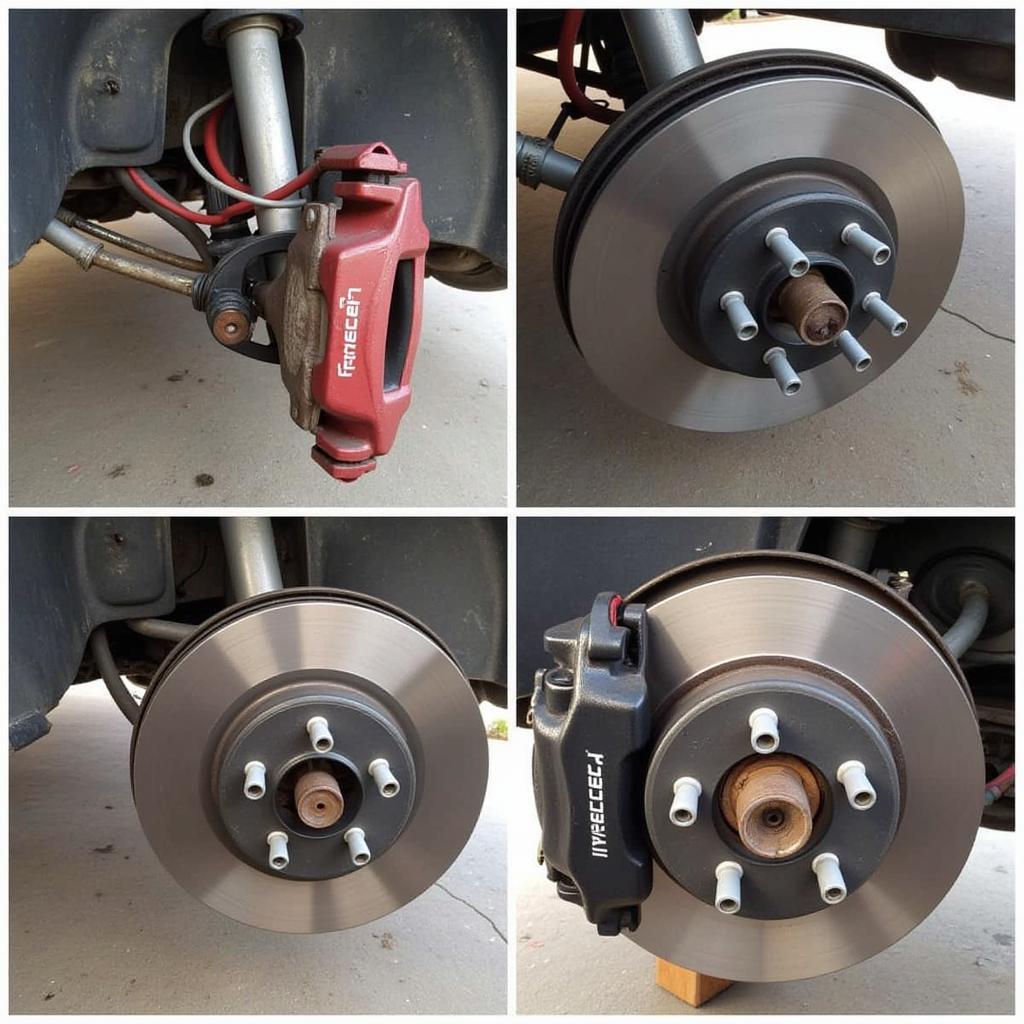 Inspecting Brake System Components in a 1983 Mercedes 300D
Inspecting Brake System Components in a 1983 Mercedes 300D
Conclusion
A glowing yellow brake fluid warning light on your 1983 Mercedes 300D should never be ignored. By understanding the potential causes and taking appropriate action, you can address the issue promptly and ensure your safety on the road. Regular maintenance and timely professional attention are crucial for maintaining a healthy and reliable braking system in your classic Mercedes.

